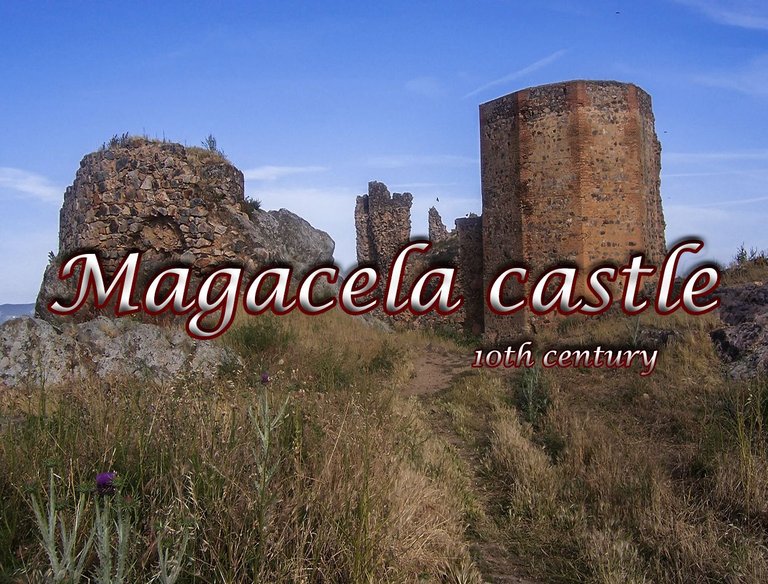

In the area called “La Serena” in the south-central part of the province of Badajoz, which is characterised by its farmland, large estates and the proximity of the Guadiana River, there are some small mountainous elevations that stand out from the landscape. This type of elevated terrain was very valuable as it dominated a large area or region and there was a tendency to build buildings, fortresses or castles on them. My travels took me to this town located on the side of this mountain and which at its peak dominates the remains of the castle, Magacela. I left the capital of the community, Mérida, to head along the EX-346 road and reach another provincial road, the BA-084, which would take me to the town of Magacela. In the distance, long before arriving, the mound where it was located in this area of plains in the province of Badajoz, in the northwest of Spain, was already notable.
En la zona denominada “La Serena” en el centro sur de la provincia de Badajoz y que se caracteriza por sus tierras de cultivo, grandes fincas y la cercanía del rio Guadiana se encuentran algunas pequeñas elevaciones montañosas que destacan del paisaje. Este tipo de terreno elevado era muy valioso ya que dominaba sobre una amplia zona o región y se tenía la tendencia de construir edificaciones, fortalezas o castillos en ellas. Mis viajes me llevaron a este pueblo situado a la ladera de esta montaña y que en su cima domina los restos del castillo, Magacela. Salí de la capital de la comunidad, Mérida, para dirigirme por la carretera EX-346 y llegar hasta otra vía provincial la BA-084 que me llevaría al pueblo de Magacela. En la distancia, mucho antes de llegar, ya destacaba por el montículo donde estaba situado en esta zona de llanuras de la provincia de Badajoz, en el noroeste de España.

Magacela
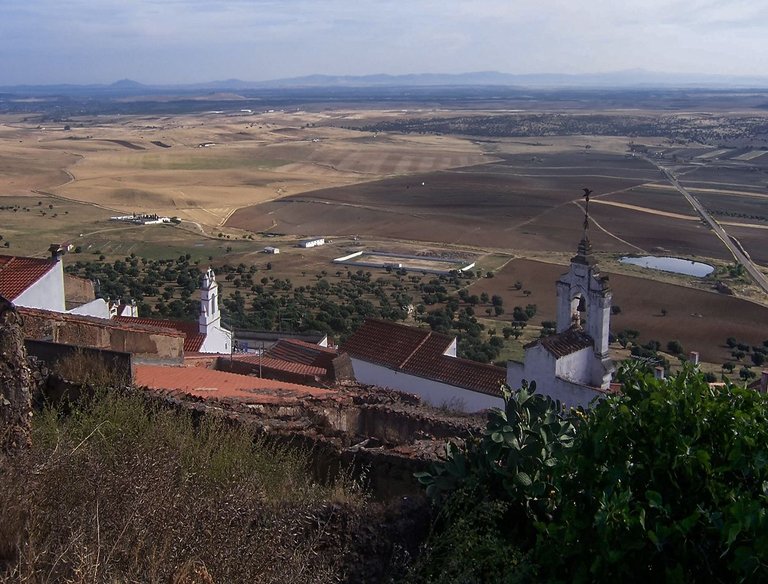

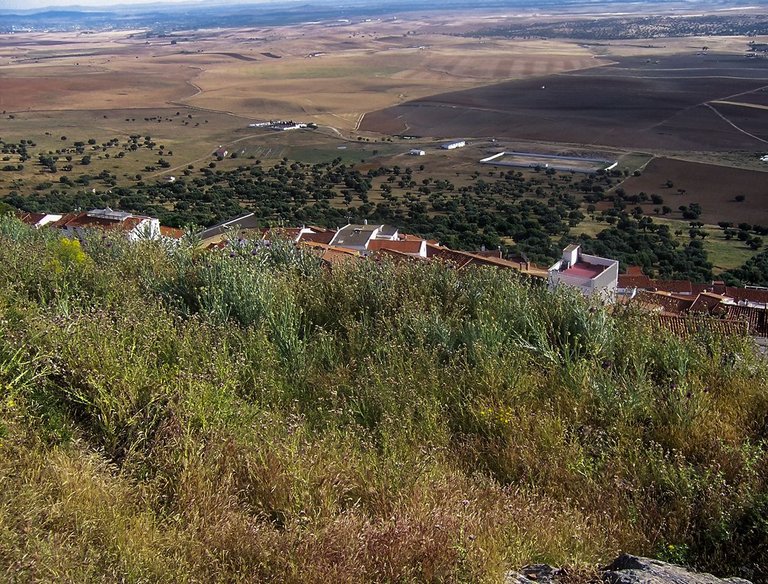

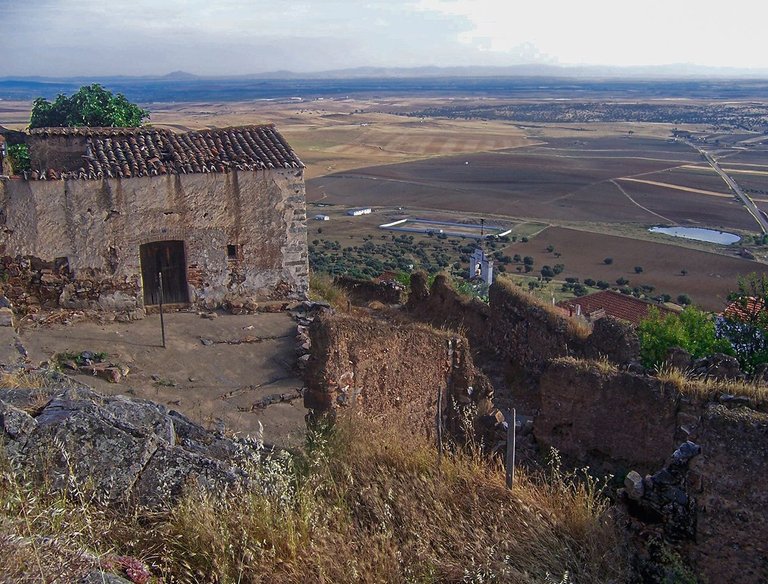

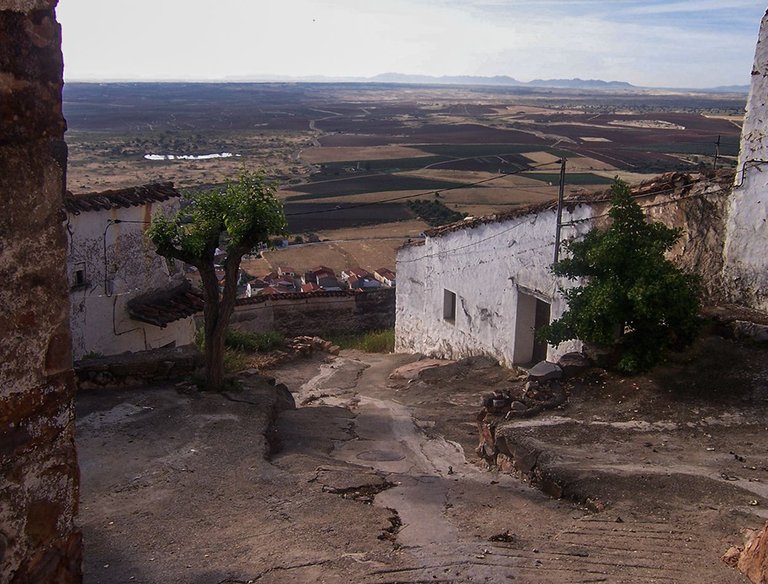

I parked the car on an esplanade at the foot of the hill to begin a climb to the top of the mountain to reach the remains of the castle and walk through the oldest streets closest to the path that leads to it. As I climbed up the slope of the village of Magacela the views were truly fantastic, reaching many kilometres along the circular climb to the top. The village was gradually becoming situated below the streets and the path to the castle and began to show me its oldest part, houses and buildings that showed the passing of the years, their type of architecture, their wear and tear and their endurance in these conditions.
Aparque el coche en una explanada al pie de la colina para iniciar una subida hasta lo más elevado de la montaña para llegar a los restos del castillo y recorrer las calles más antiguas y cercanas al camino que lleva hacia él. En la medida que iba subiendo por la ladera del pueblo de Magacela las vistas eran realmente fantásticas alcanzando a ver muchos kilómetros en toda esa subida circular hacia la cima. El pueblo poco a poco se iba situando por debajo de las calles y del camino hacia el castillo y me empezaba a mostrar su parte más antigua, casas y edificios que mostraban el paso de los años, su tipo de arquitectura, su desgaste y su aguante en estas condiciones.

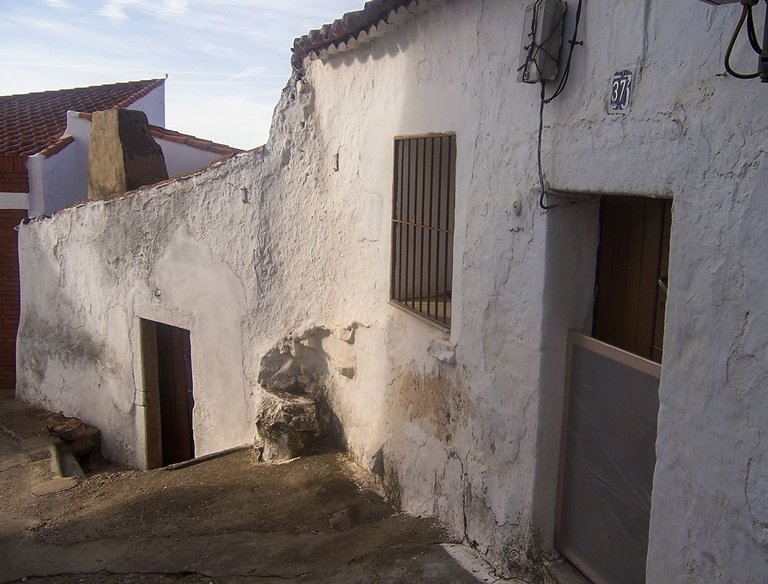

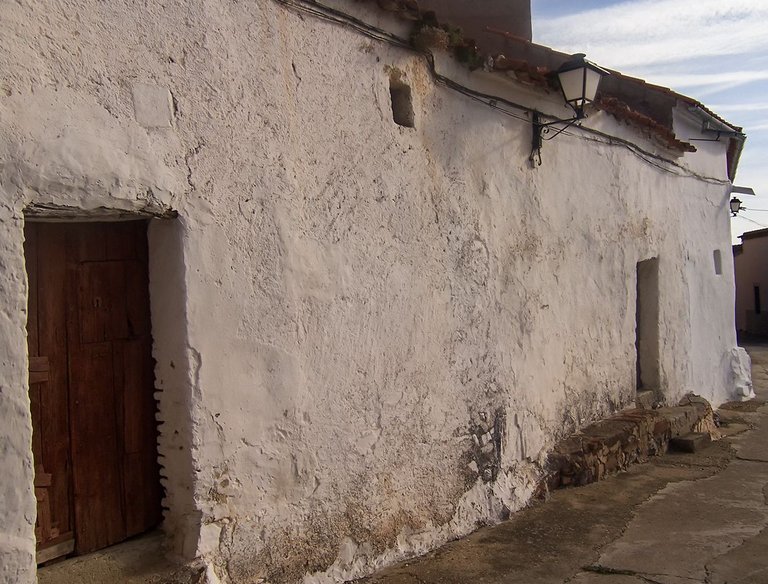

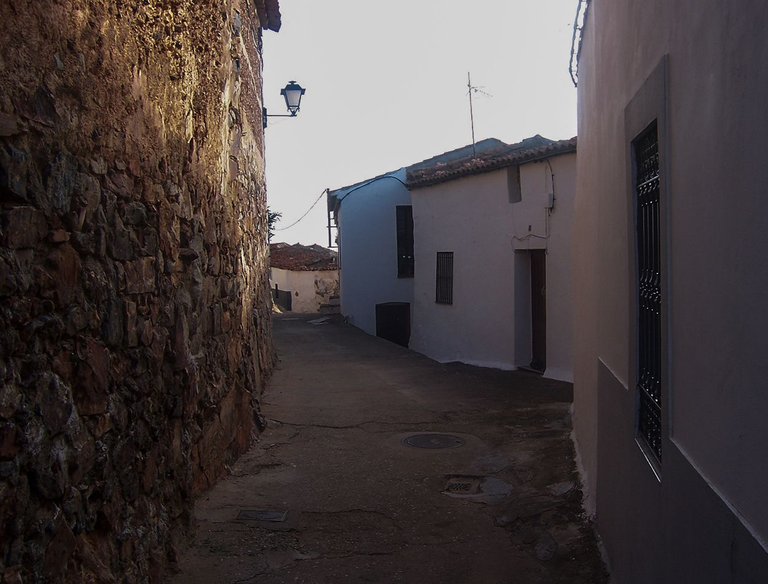

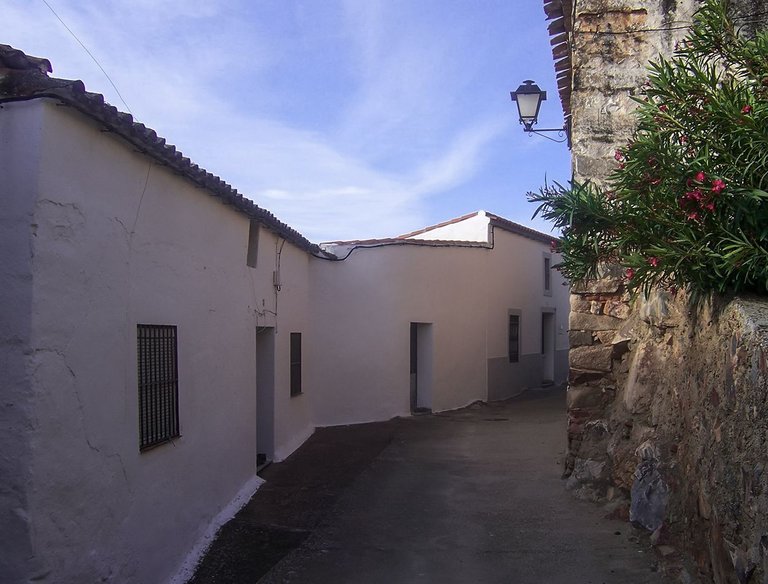



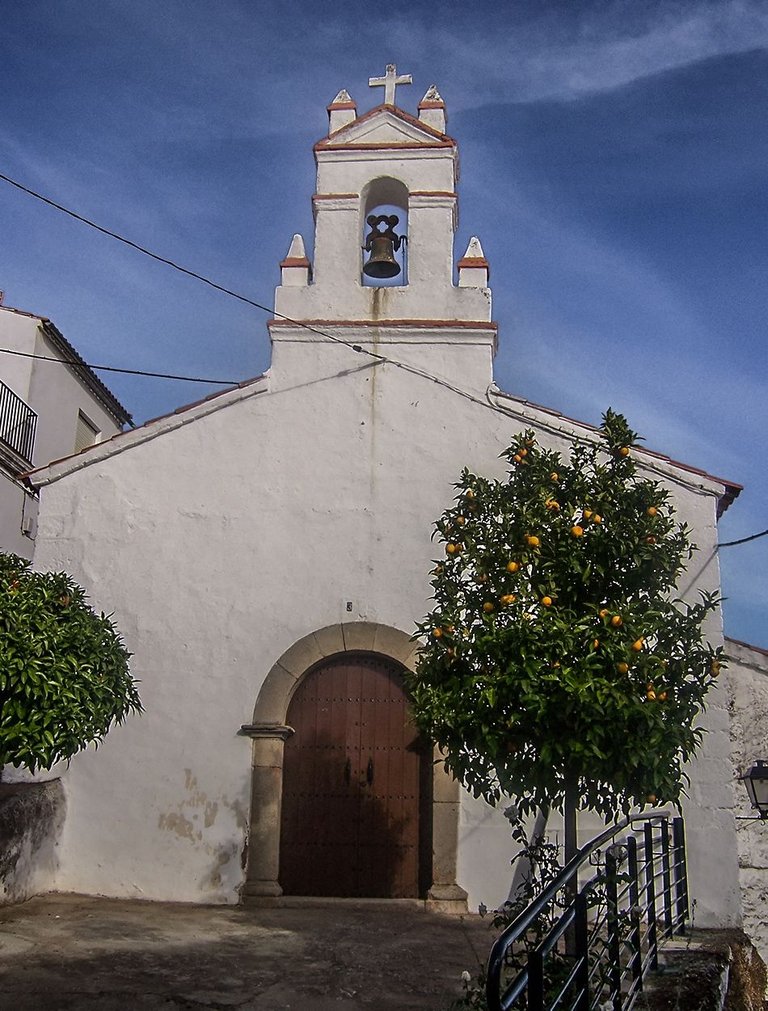

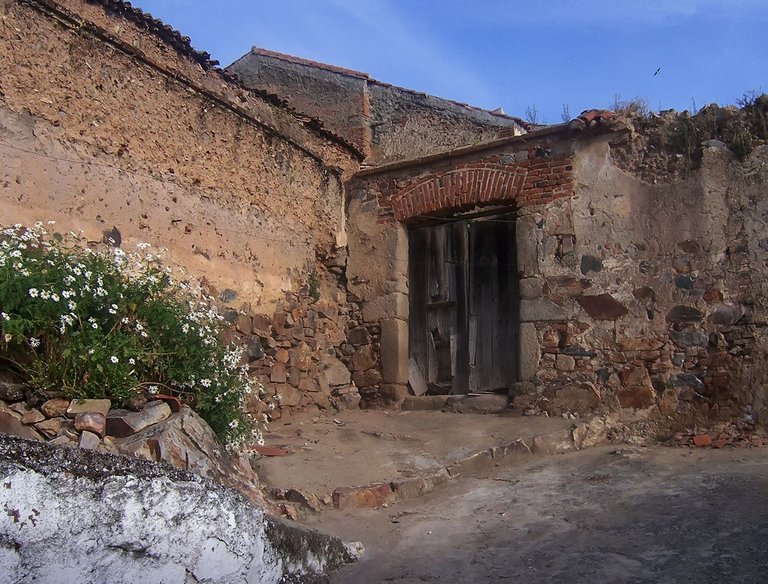
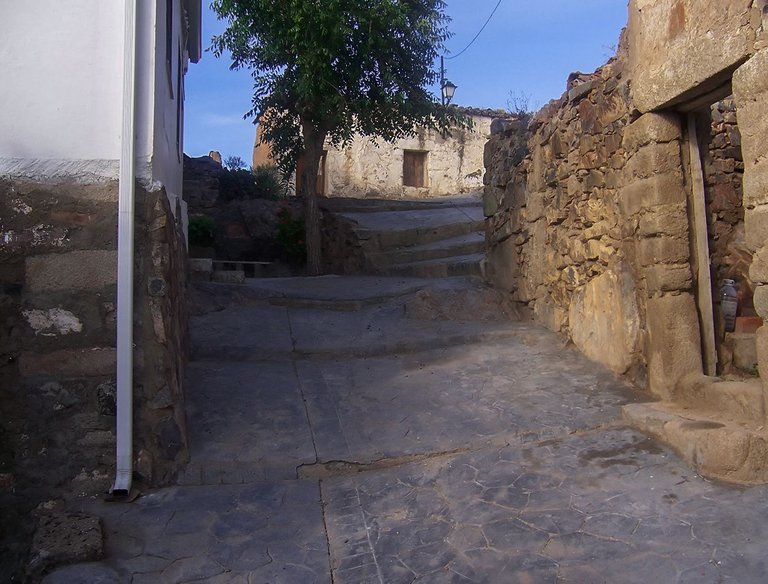

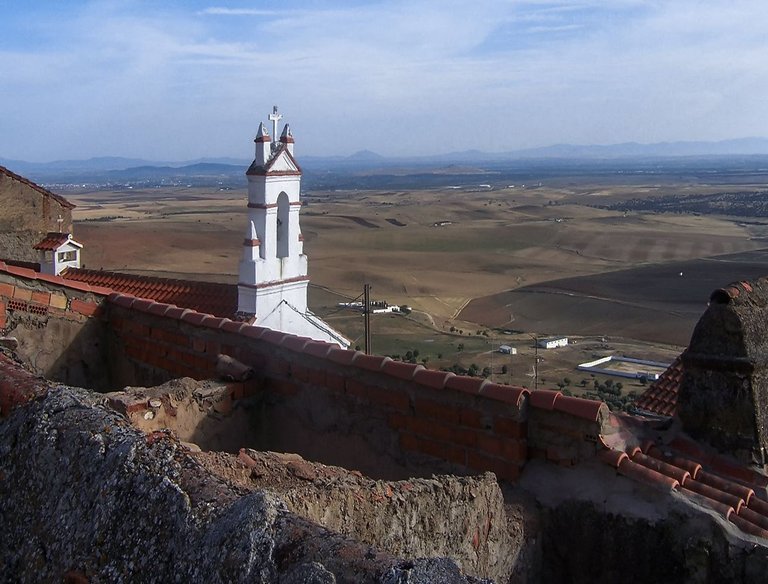

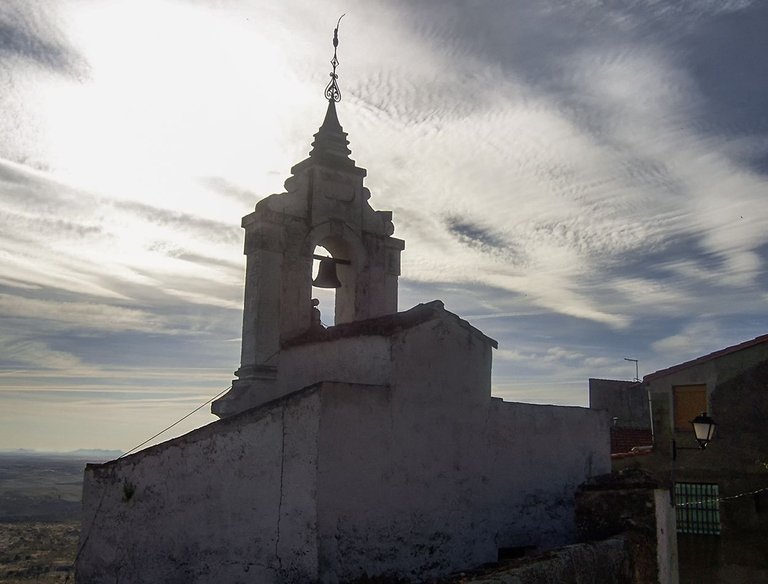

Leaving through the highest part of the town of Magacela and following the path to the top, I went directly to the entrance of the remains of the pre-Romanesque castle, which seems to have been built between the 10th and 12th centuries, although it was later used and renovated by the different cultures that governed regions for years. The Arabs modified and rebuilt it, and later, with the reconquest of the Christian kingdoms and after bloody battles for the territory, it became a domain and an important point in this area of the country. The remains that I have been able to admire show the wounds and the passage of time on its walls and towers, observing great wear and tear. I have walked through these ruins alone and I can share with you that the experience of doing so alone has been a challenge, since on many occasions it seemed that time had stopped or that the ancient inhabitants and defenders were still there among us.
Saliendo por la parte más alta del pueblo de Magacela y siguiendo el camino hacia la cima me dirigí directamente a la entrada de los restos del castillo prerrománico que parece ser datada su primera construcción entre los siglos X al XII aunque posteriormente fue usado y reformado por las distintas culturas que gobernaron regiones durante años. Los árabes lo modificaron y reconstruyeron y posteriormente con la reconquista de los reinos cristianos y después de sangrientas luchas por el territorio fue dominio y punto importante en esta zona del país. Los restos que he podido admirar se perciben las heridas y el paso del tiempo en sus muros y torres observando un gran desgaste. He caminado por entre estar ruinas en solitario y os puedo compartir que la experiencia de hacerlo en soledad ha sido un reto ya que en mucha ocasiones parecía que el tiempo de había detenido o que los antiguos moradores y defensores aun seguían por allí entre nosotros.

Magacela castle
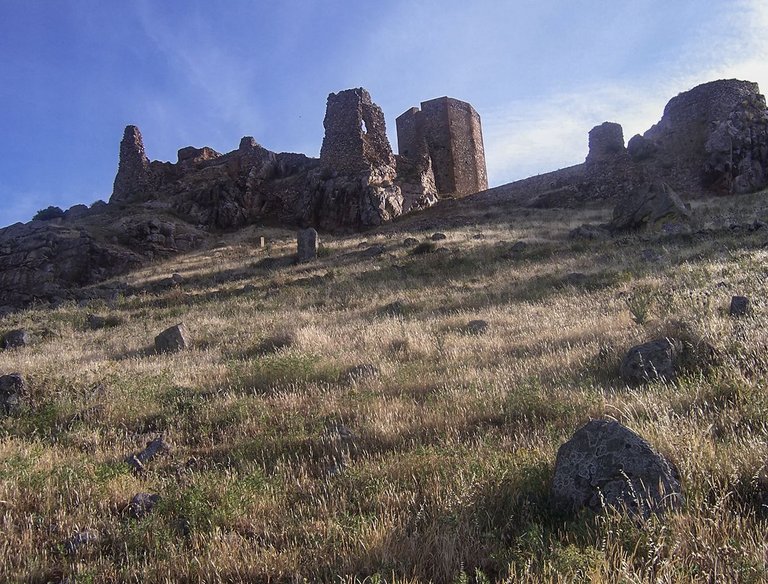

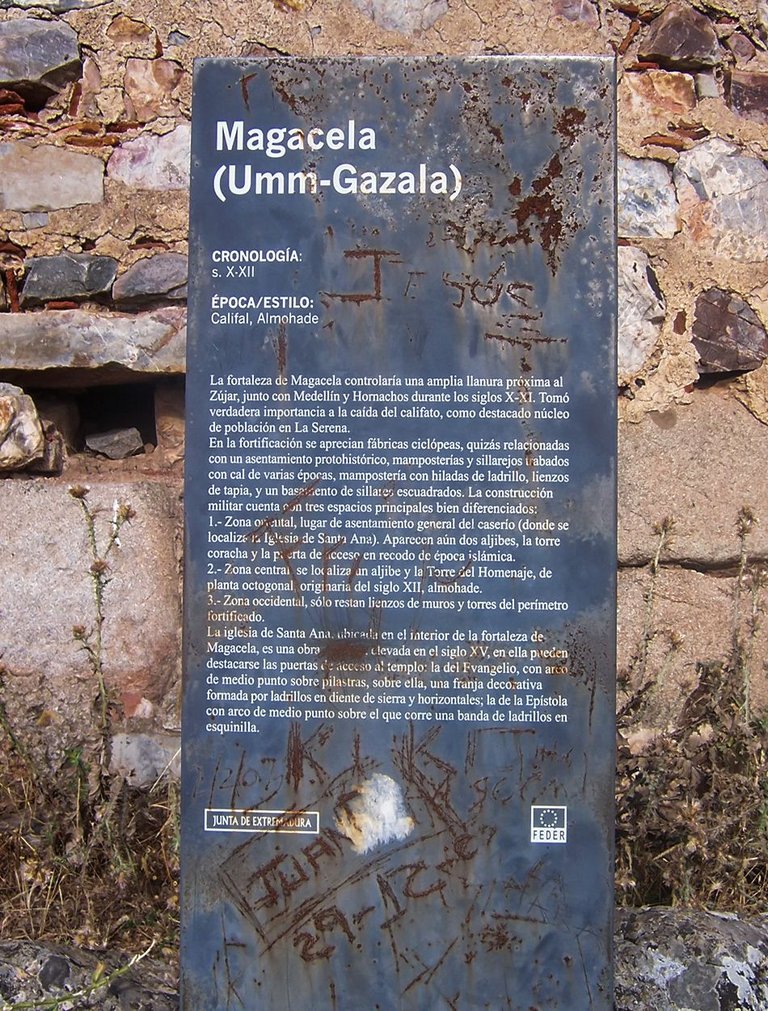

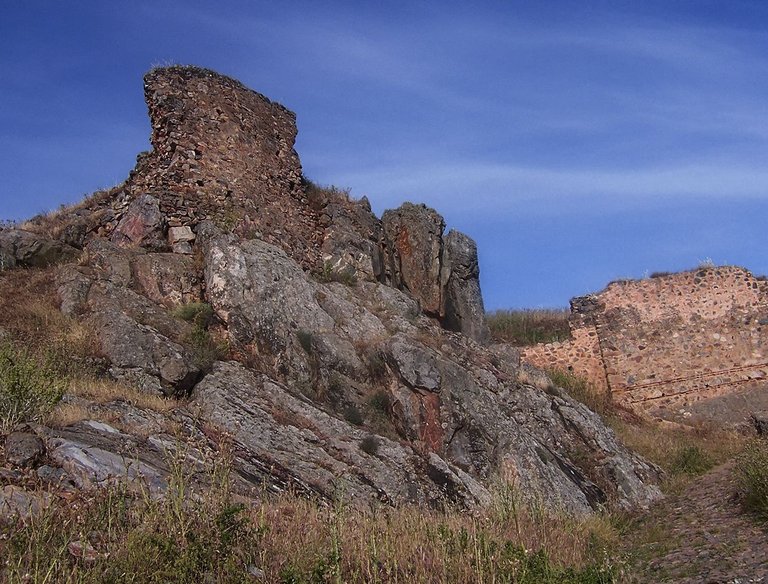

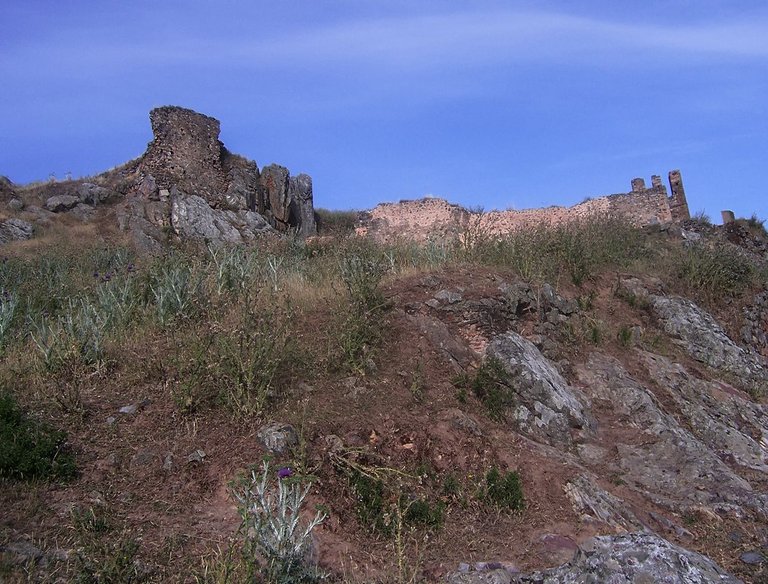
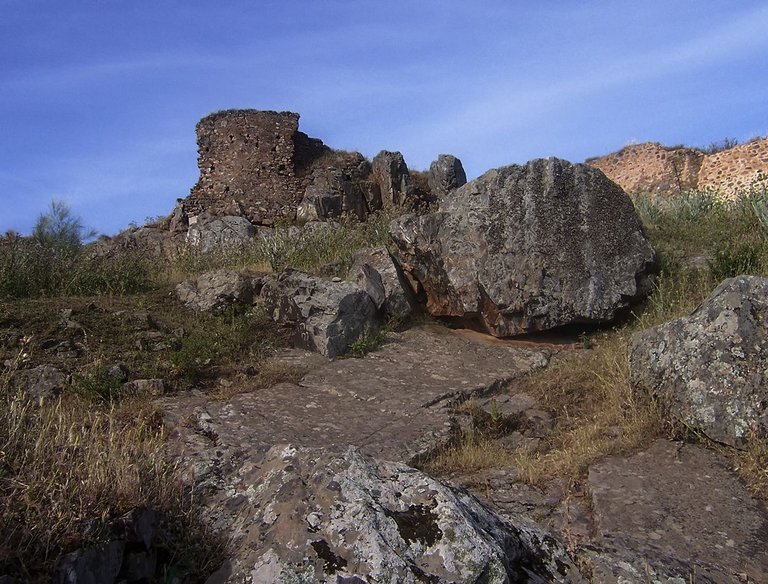

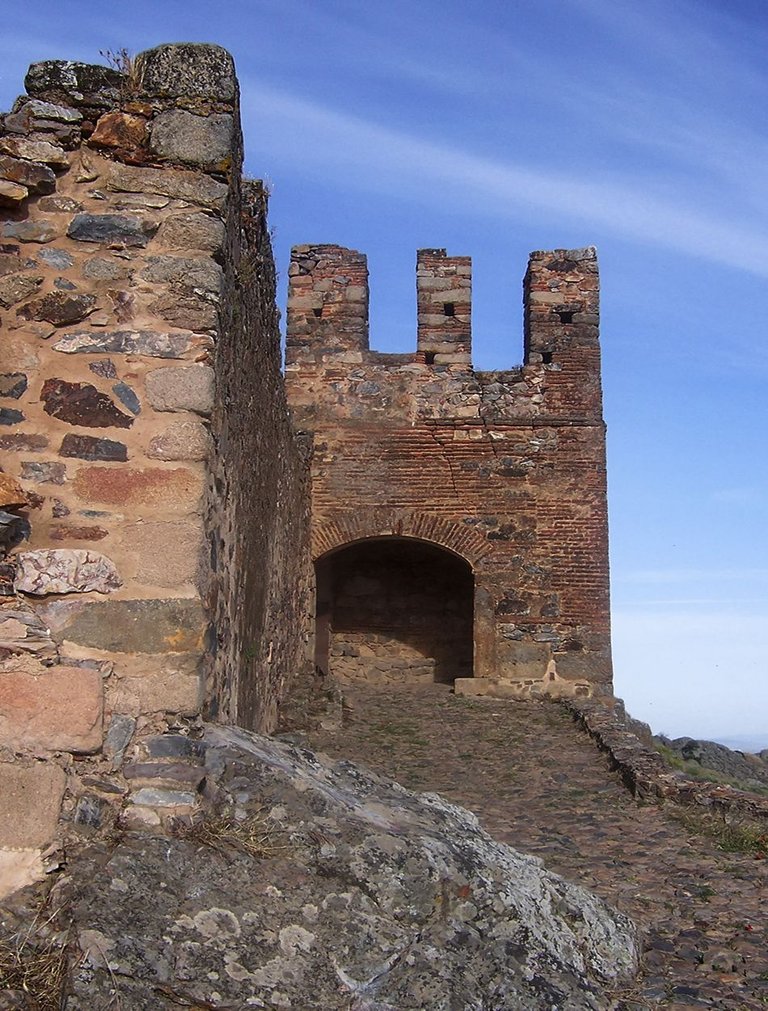

Towers
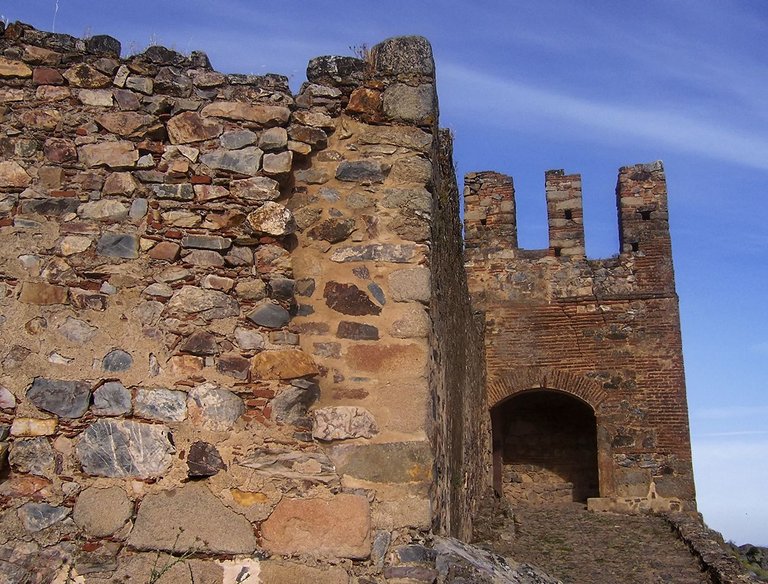

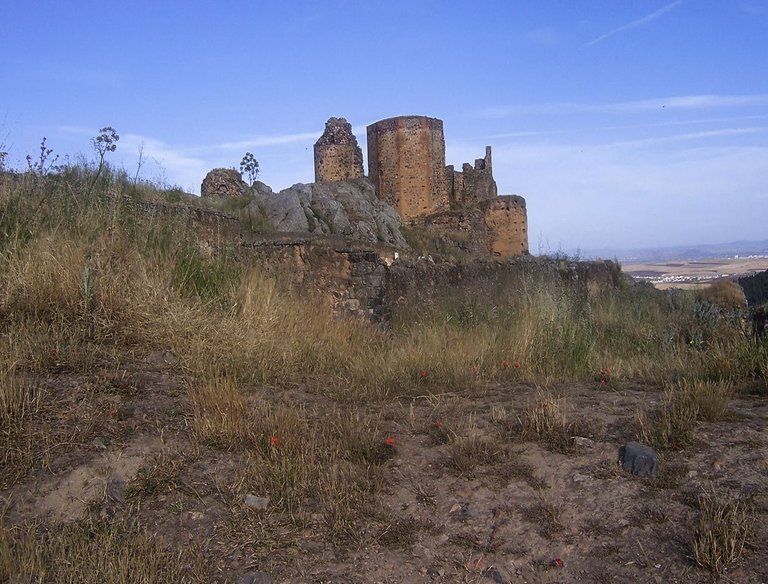

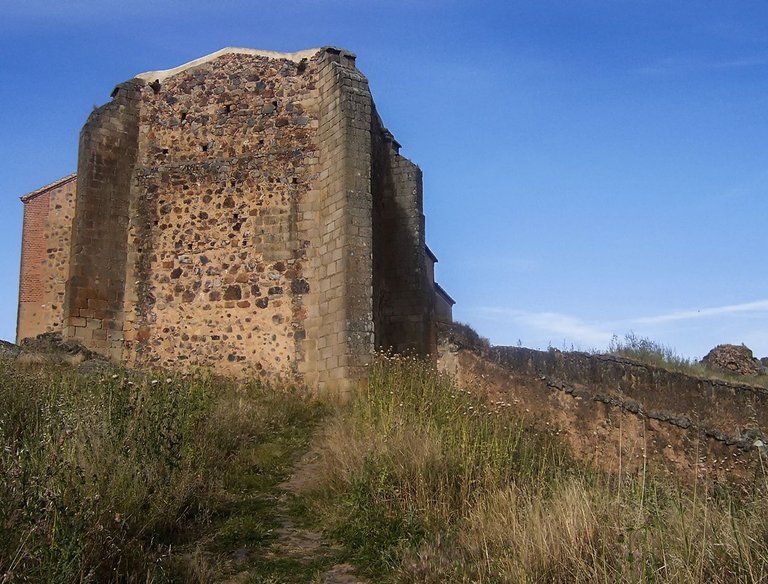

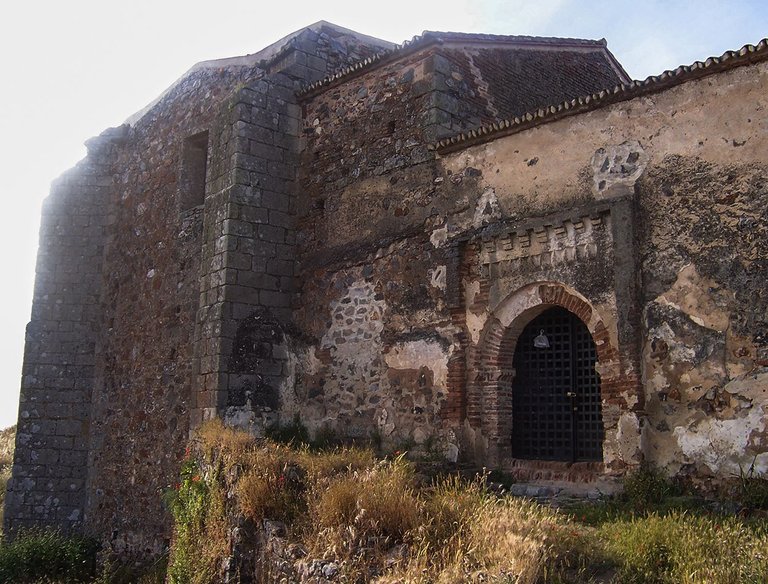

In this historic landscape and surrounded by remains of walls, stones, battlements, towers and the cistern, the castle gradually showed me its most important parts. The views of it that were drawn on this beautiful day against a changing blue sky were spectacular and observing the great valley from the top left me looking for a long time. The beauty of the landscape from above and the castle as a reference and point from which to observe become a privileged place to spend a good adventure and a beautiful day.
En este paisaje histórico y rodeado por restos de muros, piedras, almenas , torres y el aljibe el castillo me mostraba poco a poco sus partes más importantes. Las vistas del mismo que se dibujaban en este hermoso día contra un cielo azul cambiante eran espectaculares y observar el gran valle desde la cima me dejaba un buen rato mirando. La belleza del paisaje desde arriba y el castillo como referencia y punto desde donde observar se convierten en un lugar privilegiado para pasar una buena aventura y un hermoso día.

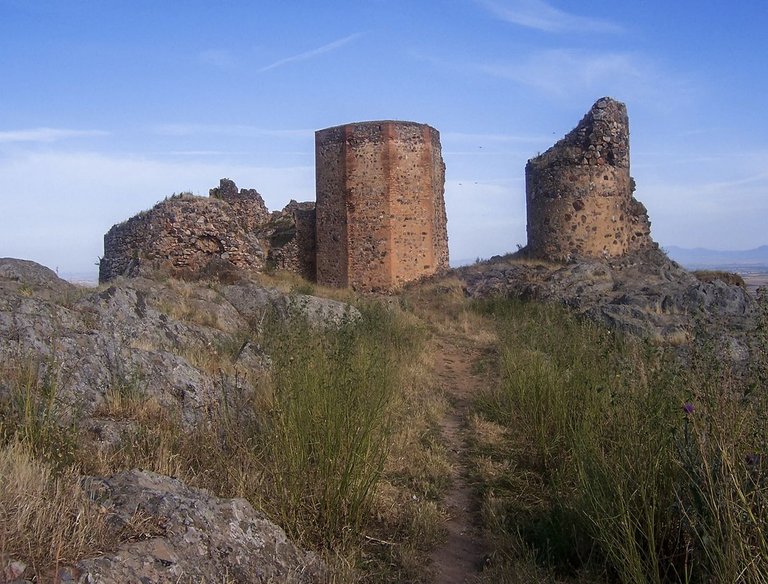







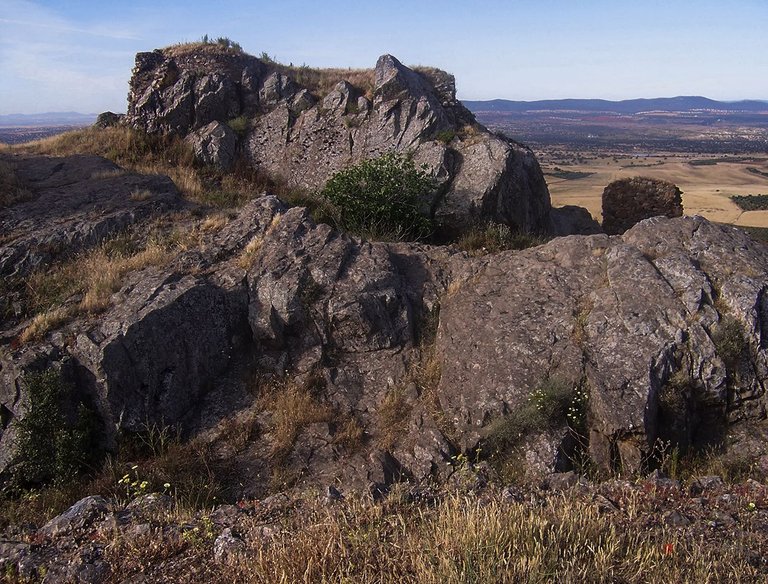


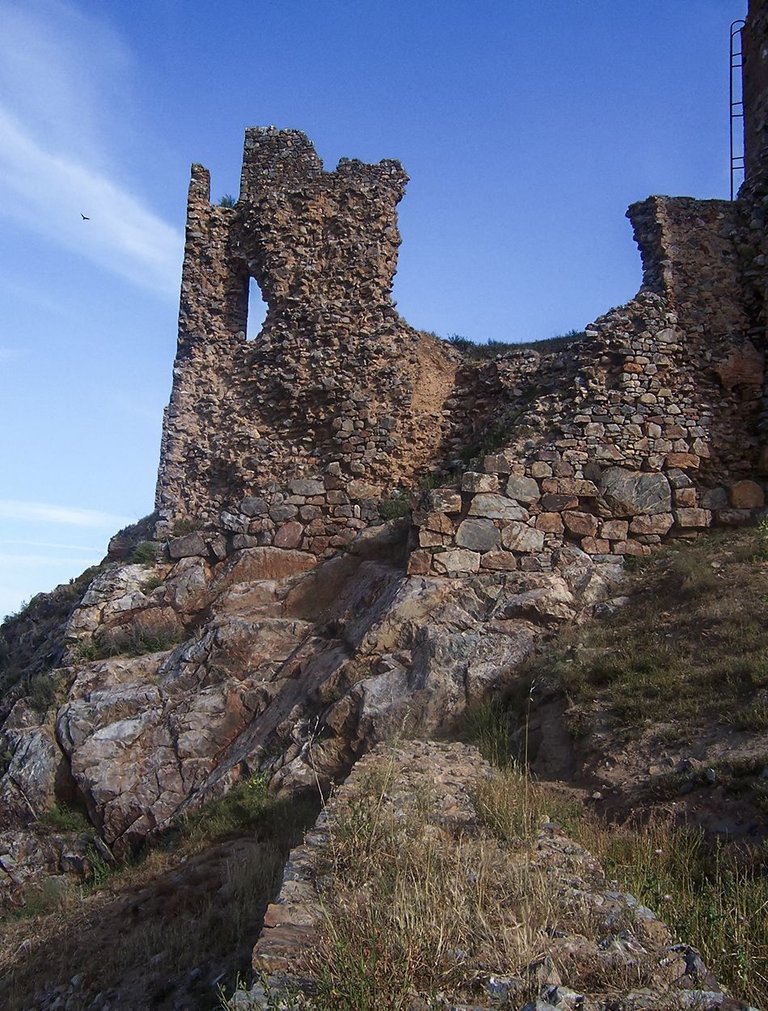



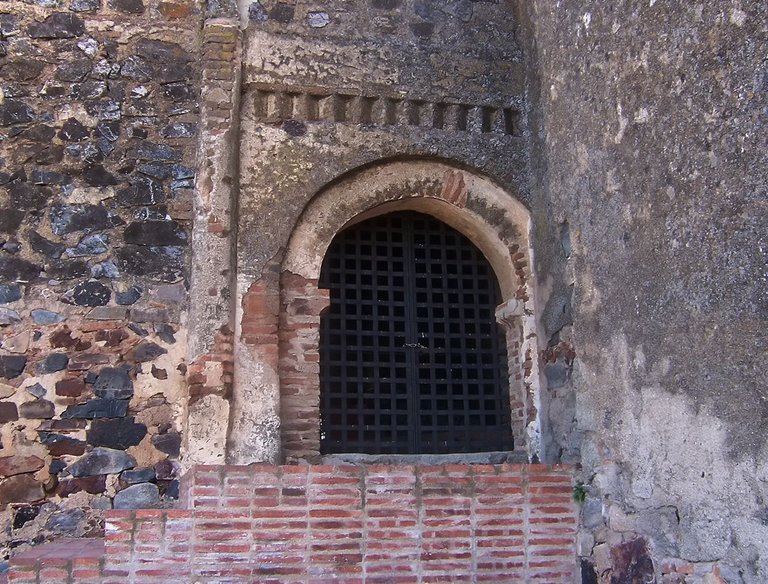
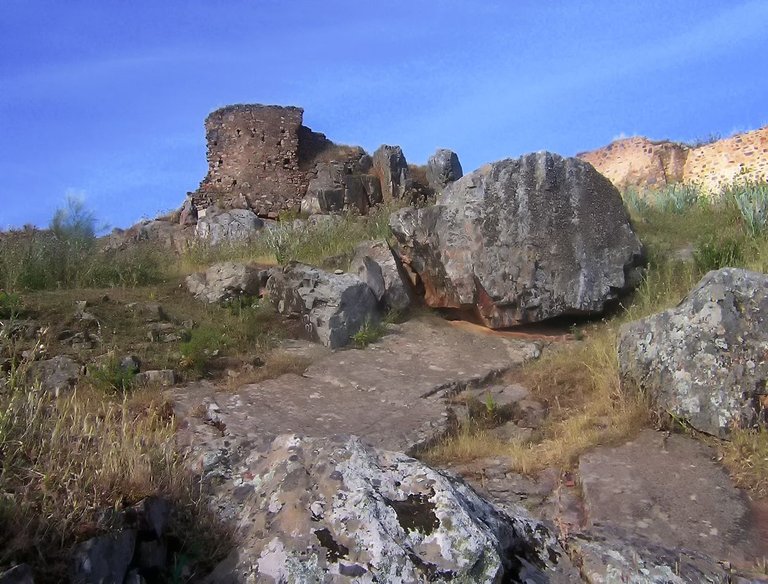



The region of “La Serena” in the province of Badajoz in Extremadura is full of archaeological and historical remains of the legacy of our past. Magacela is a clear example of this legacy with its beautiful castle. I share my trip and record my experience on the world map. I extend an invitation to visit the beautiful places that I present to you. Greetings friends.
La comarca de “La Serena” en la provincia de Badajoz en Extremadura está llena de restos arqueológicos e históricos del legado de nuestro pasado. Magacela es un claro ejemplo de este legado con su hermoso catillo. Comparto mi viaje y dejo constancia de mi experiencia en el mapa mundial. Les extiendo una invitación para visitar los bonitos lugares que les presento. Saludos amigos.

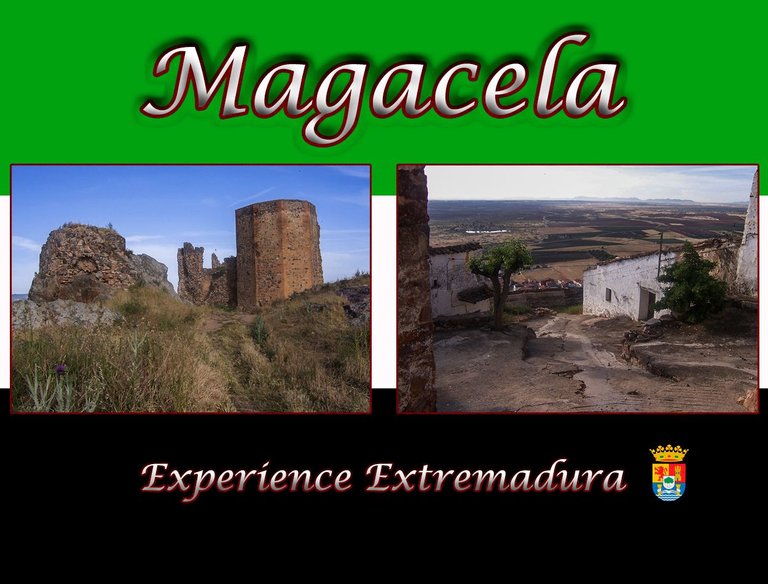

| Categoría | Phototalent |
| Ajustes | ISO-100 f/8 1/100s |
| Cámara | Nikon D7100 - Olympus E410 y Kodak Z |
| Lente | Nikkor or Olympus |
| Localización | Spain |


Image ©oscarps. All Rights Reserved.
Original content by @oscarps
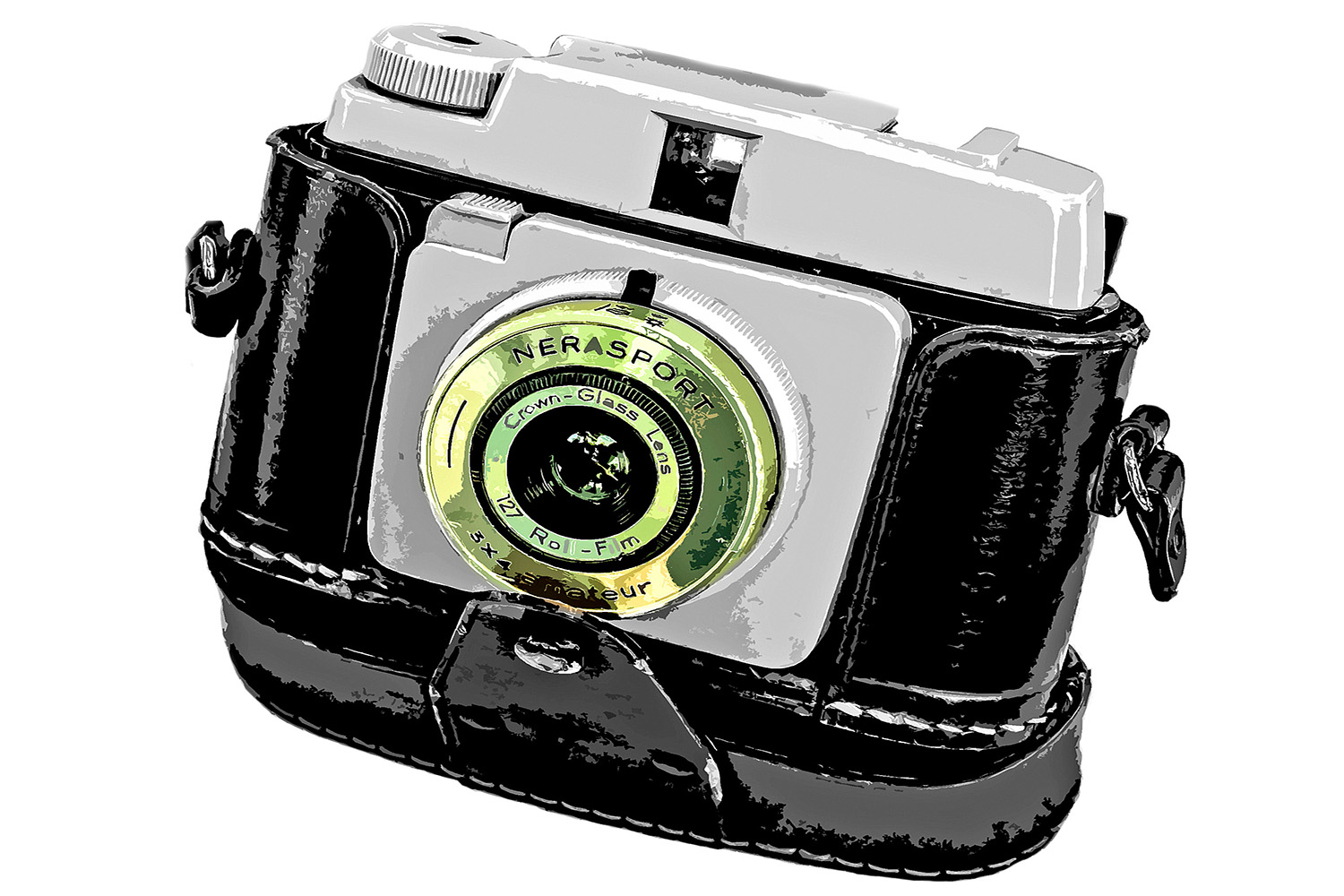
You can check out this post and your own profile on the map. Be part of the Worldmappin Community and join our Discord Channel to get in touch with other travelers, ask questions or just be updated on our latest features.
Hermoso recorrido, me gustó el campanario de la iglesia y las construcciones de piedra en la montaña.
Feliz y próspero año 2025! 🙏😊🎄🎅
Feliz año nuevo @belkyscabrera, este lugar tiene unas vistas maravillosas, saludos y gracias por tu comentario amiga.
Travel Digest #2425.
Become part of our travel community:
- Join our Discord
Hiya, @lizanomadsoul here, just swinging by to let you know that this post made it into our Honorable Mentions in Your post has been manually curated by the @worldmappin team. If you like what we're doing, please drop by to check out all the rest of today's great posts and consider supporting other authors like yourself and us so we can keep the project going!